Explore Dak Lak - Central Vietnam Travel, Asia
Dak Lak, located in the heart of Vietnam's Central Highlands, is a hidden gem waiting to be found. This province, renowned for its lush landscapes and rich cultural tapestry, offers a unique blend of natural beauty and ethnic diversity. Dak Lak's location in the highlands provides a cool climate and picturesque scenery that contrasts with Vietnam's bustling coastal cities. Whether you're drawn by its coffee culture, stunning waterfalls, or traditional festivals, Dak Lak promises an unforgettable travel experience.
Population: Approximately 2.2 million in 2022.
Economy: Dak Lak's economy is primarily driven by agriculture, especially coffee production, which is a major export. The region also benefits from tourism, with growing interest in its cultural and natural attractions.
Landmarks: Famous for Lak Lake, Buon Don Village, and Yok Don National Park.
Vietnam
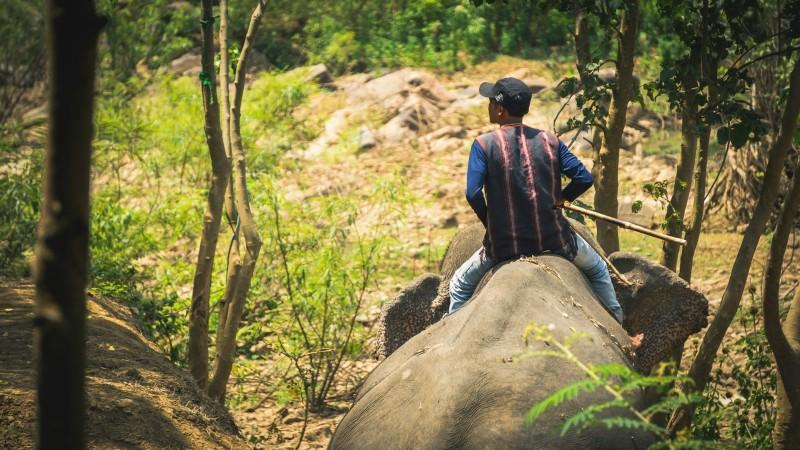
Overview of Dak Lak
History & Culture Influence
Dak Lak boasts a fascinating history shaped by its diverse ethnic communities and colonial past. Originally inhabited by various ethnic minorities, including the Ede, M'nong, and Jarai, the province's cultural heritage is a tapestry of traditional practices and customs. Dak Lak's history is deeply intertwined with its indigenous cultures and colonial influences. The region was once a significant center for trade and cultural exchange, which is evident in its rich traditions and historical sites. The local ethnic groups, each with their unique languages and rituals, contribute to Dak Lak's vibrant cultural scene.
Interaction with The Locals
Dak Lak has a population of approximately 2.2 million people. The province is known for its ethnic diversity, with several indigenous groups, including the Ede, M'nong, and Jarai, contributing to its rich cultural tapestry. The vast majority of the population lives in rural regions, where traditional lifestyles and customs are maintained. Dak Lak's residents are known for their hospitality and strong connection to their cultural heritage.
Spend time with the most friendly Vietnamese in our exclusive tours to Vietnam here.
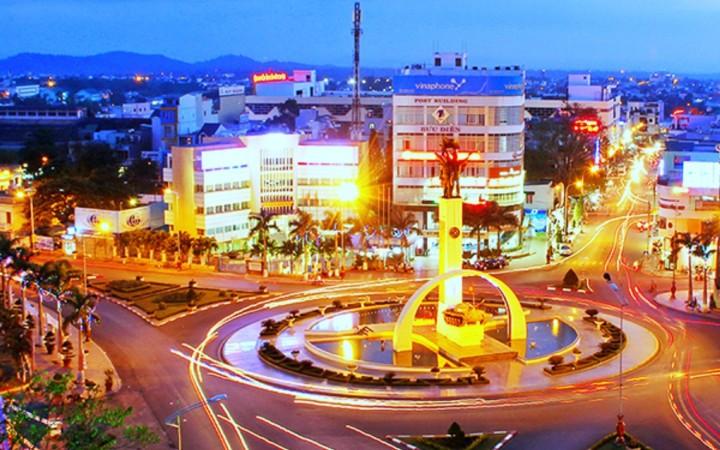
Buon Ma Thuot at night - © Vietnam Tourism
Top Attractions in Dak Lak
- Lak Lake: A serene and expansive lake surrounded by rolling hills, Lak Lake is ideal for boating and enjoying panoramic views. The calm waters and lush surroundings make it a perfect retreat for nature lovers.
- Buon Ma Thuot City: Known as the coffee capital of Vietnam, Buon Ma Thuot is a bustling city with a rich history. Visitors can explore coffee plantations, learn about the coffee-making process, and enjoy the local coffee varieties that have gained international acclaim.
- Dray Nur and Dray Sap Waterfalls: These breathtaking waterfalls are among Dak Lak's natural highlights. Dray Nur, with its impressive cascades, and Dray Sap, known for its misty beauty, offer stunning landscapes and opportunities for hiking and photography.
- Buon Don Village: Famous for its elephant riding and traditional crafts, Buon Don Village provides a unique glimpse into the region's cultural heritage. Visitors can learn about local craftsmanship and enjoy an elephant trek through the scenic landscape.
- Yok Don National Park: This expansive park is a haven for wildlife enthusiasts and nature lovers. Home to diverse flora and fauna, including endangered species like the Asian elephant and the wild buffalo, Yok Don offers trekking, bird watching, and the chance to immerse yourself in the region's natural beauty.
- Trung Nguyen Legend Coffee Village: A must-visit for coffee lovers, this attraction provides a deep dive into Vietnam's coffee culture. The village offers guided tours of coffee production facilities and tastings of various coffee blends.
Central Vietnam is the place that can offer you various breathtaking natural wonders. You can explore more about Nha Trang, a famous place to visit in Vietnam, here.
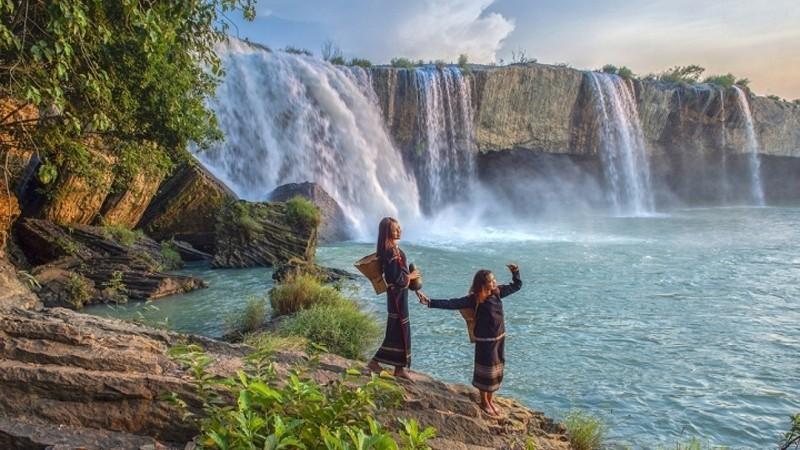
Dray Nur and Dray Sap Waterfalls - © VietnamNet
Must-Try Dishes in Dak Lak
- Deer Meat: A typical dish of the Central Highlands, particularly in Dak Lak, is deer meat. Fresh deer meat is different from beef in that it is softer than young calf meat and contains less tendon and ivory-white fat.
- Local Coffee Varieties: Dak Lak is famed for its coffee, and tasting the local brews is a must. From robust espresso to sweetened Vietnamese iced coffee, the region's coffee culture is an integral part of the dining experience. Don't pass up the opportunity to sample these unique flavors in a neighborhood café.
- Bitter Eggplant: In the daily meals of the E De ethnic group, bitter eggplant is a flexible component that can be utilized in a variety of recipes, including those that include cooking with fresh fish, dried fish, dried shrimp, wild meat, etc. The E De people also like to eat raw, bitter eggplant uncooked, crushed and seasoned with salt, pepper and other herbs.
- Red Rice Noodles: This dish features vibrant red rice noodles served with a flavorful broth, fresh herbs, and a choice of meats or seafood. The distinctive color comes from natural ingredients, making it both a visual and culinary delight.
- Don-Village Grilled Chicken: Garlic, lemongrass, and spices are used to marinade tender chicken, which is then expertly grilled. This dish is known for its aromatic flavor and is typically served with rice or as part of a larger meal.
- Com Lam (Bamboo Rice): A traditional dish made from sticky rice cooked in bamboo tubes over an open flame. This aromatic and slightly smoky rice is often enjoyed with grilled meats or fresh vegetables, making it a flavorful and authentic taste of Dak Lak. Com Lam is a must-have dish whenever you visit mountainous areas of Vietnam.

Red Rice Noodles - © Bach Hoa XANH
Festivals & Local Celebrations
Ban Don Elephant Festival
Held annually in Buon Don Village, the Ban Don Elephant Festival is a grand celebration of the region's historic relationship with elephants. The festival features a range of activities including traditional elephant rides, parades, and performances. Locals showcase their skills in elephant care, and visitors can witness cultural ceremonies honoring these majestic animals. The festival also includes folk dances, music, and traditional cuisine, offering an immersive experience into Dak Lak’s cultural traditions.
Dak Lak Coffee Festival
The Coffee Festival in Buon Ma Thuot is a major event that highlights the significance of coffee in Dak Lak's culture and economy. Usually held every two years, coffee lovers from all over the world come to this event. Visitors can explore coffee exhibitions, participate in coffee tasting sessions, and learn about the history and production processes of Vietnamese coffee. The festival also features a variety of cultural activities, including music performances, art exhibitions, and traditional dance, making it a vibrant celebration of the region’s coffee heritage.
Cultural Festivals of Ethnic Groups
Dak Lak is home to various ethnic groups, each with its own set of festivals and traditions. These annual cultural events provide an in-depth exploration of the traditions and customs of the surrounding villages. For example, the Ede people celebrate the "Yang Pheo" festival, a ritual to honor their ancestors and gods, with traditional dances, music, and feasts. Similarly, the M'nong community celebrates the "Tet Doan Ngo" festival, which includes unique ceremonies and traditional games. Attending these festivals provides visitors with a unique opportunity to engage with and appreciate the diverse cultures within Dak Lak. If you are interested in living the ethnic group life, consider travelling to Dien Bien as well to fully experience the uniqueness of their lives.
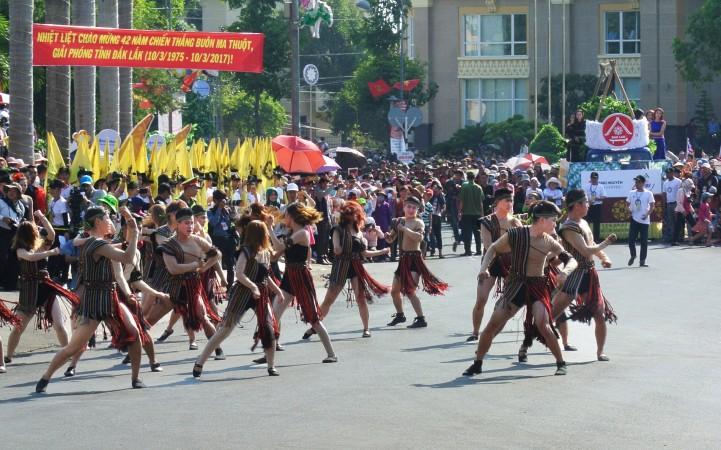
Dak Lak Coffee Festival - © Cafe MOC
What to Do in Dak Lak
- Explore Yok Don National Park: Embark on an adventure through Yok Don National Park, where you can enjoy hiking trails, bird watching, and wildlife spotting. The park is home to diverse flora and fauna, including endangered species like the Asian elephant and wild buffalo.
- Visit Coffee Plantations: Take a tour to the coffee plantations in Buon Ma Thuot to learn about the coffee production process and sample some of the finest local brews. Discover the intricacies of coffee farming and enjoy tastings that highlight Dak Lak’s renowned coffee culture.
- Hike to Dray Nur and Dray Sap Waterfalls: Experience the natural beauty of Dak Lak by hiking to the stunning Dray Nur and Dray Sap Waterfalls. These majestic falls offer breathtaking views and excellent opportunities for photography and nature appreciation.
- Explore Local Villages: Visit ethnic minority villages like Buon Don and Lak Lake Village to immerse yourself in traditional crafts, customs, and daily life. Participate in local activities, learn about traditional practices, and enjoy cultural performances.
- Experience Elephant Rides: In Buon Don Village and other areas, take part in traditional elephant riding experiences. Learn about the care and training of elephants while enjoying a unique ride through the picturesque landscape.
- Enjoy Traditional Craft Workshops: Engage in hands-on workshops to learn about traditional Dak Lak crafts. Whether it's weaving textiles or carving wood, these workshops offer an authentic glimpse into local artisanal skills.
Learn more about various unique activities that you can only find in Central Vietnam, such as in Hue, here.
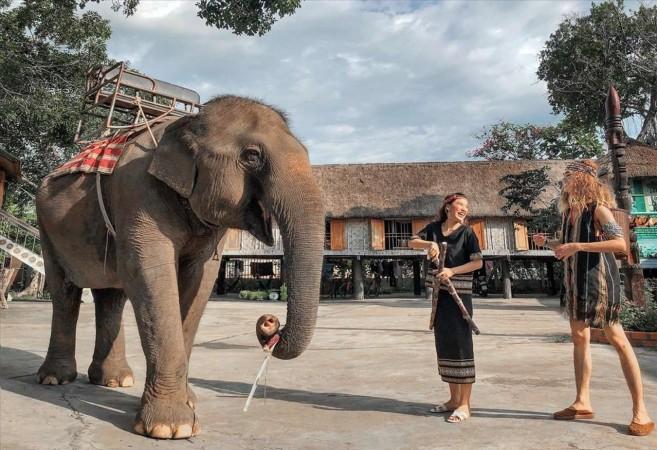
Elephant Riding in Don Village - © HaNoiMoi
Shopping in Dak Lak
Where to Shop in Dak Lak
- Buon Ma Thuot Market: A bustling market where you can find a wide array of goods, including fresh produce, local handicrafts, and traditional textiles. It's an excellent place to immerse yourself in the local culture and pick up souvenirs.
- Lak Lake Market: Located near Lak Lake, this market features local crafts, fresh fruits, and handmade goods. It’s ideal for finding unique items and experiencing the everyday life of the locals.
- Trung Nguyen Legend Coffee Village: A must-visit for coffee enthusiasts, this village offers a range of coffee products and a deep dive into the region’s coffee culture. Sample various blends and buy high-quality beans to take home.
- Traditional Craft Workshops: Visit workshops where local artisans create traditional crafts such as woven textiles, wooden carvings, and ethnic jewelry. These handcrafted items make for memorable and authentic souvenirs.
What to Buy in Dak Lak
- Ede and M’nong Crafts: Purchase unique crafts from the Ede and M’nong ethnic groups, including woven baskets, embroidered fabrics, and traditional jewelry. These items showcase the artistic traditions of Dak Lak’s indigenous communities.
- Coffee Beans and Grounds: Buy packaged coffee beans or grounds from local markets and specialty shops. Dak Lak’s coffee is renowned for its rich flavor and quality, making it a perfect gift or souvenir.
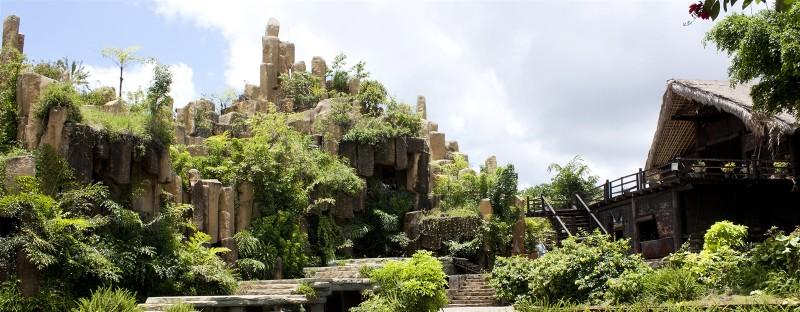
Trung Nguyen Legend Coffee Village - © Trung Nguyen Legend
Weather in Dak Lak: Best Time to Visit
Dry Season in Dak Lak
- Weather: With pleasant weather and no rain, now is the ideal time of year to explore Dak Lak. Daytime temperatures typically range from 25°C to 35°C (77°F to 95°F), making it ideal for outdoor activities and exploring the natural beauty of the region.
- Tourism Trend: This is the peak travel season in Dak Lak. With warm temperatures and minimal rainfall, it's the ideal time for outdoor activities, including hiking, waterfall visits, and exploring coffee plantations. The pleasure of regional festivals and cultural activities is further enhanced by the beautiful skies and good weather.
Wet Season in Dak Lak
- Weather: During this period, Dak Lak experiences heavy rainfall, with the heaviest showers occurring from June to August. Temperatures remain warm, but humidity levels increase, and occasional flooding can affect travel plans.
- Tourism Trend: The wet season attracts less travelers, resulting in a more relaxing experience. The heavy rainfall and increased humidity transform the landscape into lush, verdant scenery, perfect for those interested in eco-tourism and nature photography. Although some activities may be limited due to rain, the fewer crowds offer a more relaxed atmosphere for exploring local markets and cultural sites.
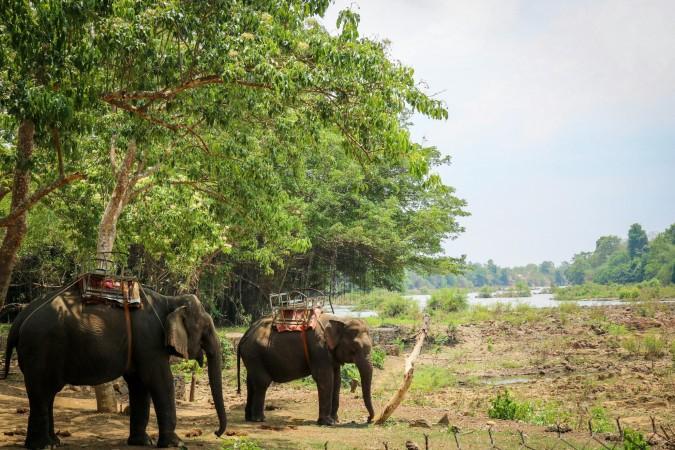
Dry Season is best for a unique experience with Dak Lak's elephants - © Hoang Kha
Culture Etiquette in Dak Lak
- Respect Traditional Ceremonies: Dak Lak is home to various ethnic groups with distinct rituals and ceremonies. When visiting ethnic minority villages, show respect by observing ceremonies quietly and asking for permission before taking photos. Participation in ceremonies, if invited, should be done with reverence for local customs.
- Greeting Customs: In Dak Lak, a common greeting among the local ethnic communities is the “hands clasped together” gesture, which symbolizes respect and friendliness. When greeting elders or community leaders, a slight bow combined with this gesture shows respect. In more urban areas, a handshake is typical, but always use your right hand for handshakes and gestures.
- Offering and Receiving Gifts: When giving or receiving gifts, use both hands as a sign of respect. This custom is particularly observed during visits to local families or when presenting offerings during ceremonies. Gifts such as fruit or small tokens of appreciation are valued, especially when visiting rural areas.
- Engaging with Locals: Dak Lak's residents value genuine interactions. Engage in conversations with a friendly demeanor and show interest in their customs and stories. If invited to a local event or celebration, accept the invitation graciously and participate with an open mind.
Essential Travel Information
Getting Around Dak Lak
- Car Rentals: Renting a car is a convenient way to explore Dak Lak at your own pace. Many rental agencies in Buon Ma Thuot offer vehicles for daily or weekly use, giving you the flexibility to visit remote attractions.
- Motorbikes and Scooters: Motorbikes are a popular choice for navigating the province’s roads and rural areas. Rentals are widely available, and it's a great way to experience the local scenery up close.
- Public Buses: For longer journeys, public buses connect Buon Ma Thuot with major cities and nearby regions. They are a budget-friendly option but may not always be the most comfortable or convenient.
- Taxis and Ride-Hailing Services: Taxis are readily available in Buon Ma Thuot, and ride-hailing apps like Grab offer convenient transportation options for shorter trips around the city.
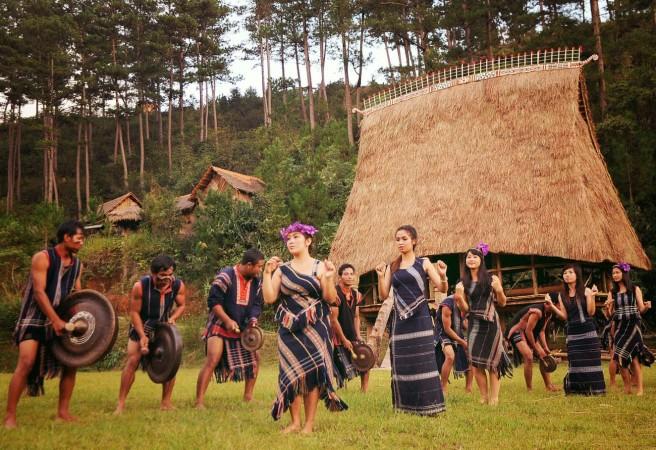
Cultural Festivals of Ethnic Groups in Dak Lak - © MIA
ATM & Banking Services
Access to banking services in Dak Lak is generally reliable, with numerous options for managing your finances. ATMs are readily available in Buon Ma Thuot and other major towns, accepting most international credit and debit cards, though it's wise to carry some cash for smaller transactions or in more remote areas. Various banks offer a range of services, including currency exchange, cash withdrawals, and account management.
Where to Stay in Dak Lak
- Hotels: Buon Ma Thuot features a variety of hotels, from budget to luxury. Options include modern establishments with central locations and amenities for a comfortable stay, as well as hotels known for their excellent service and cozy accommodations.
- Guesthouses and Homestays: Try booking a room at one of the neighborhood's guesthouses or homestays for a more genuine experience. These options provide a unique opportunity to interact with local families and immerse yourself in Dak Lak's culture.
- Eco-Lodges and Resorts: Dak Lak’s natural beauty is best enjoyed from eco-lodges and resorts that blend seamlessly with the environment. Choose from serene retreats by scenic lakes or picturesque countryside resorts for a tranquil and nature-rich stay.
Articles for you

Explore Yala National Park - Sri Lanka Travel, Asia
Tucked away in Sri Lanka’s southeastern corner, Yala National Park is where wild nature meets deep tradition. Known worldwide for its leopard population, the park is also home to elephants, sloth bears, crocodiles, and hundreds of bird species. Beyond wildlife, Yala opens doors to a cultural landscape dotted with ancient temples, Buddhist ruins, and coastal villages. For travelers seeking more than just a safari, Yala offers a chance to explore eco-tourism, local communities, and sacred heritage sites.
Population: The Yala National Park area doesn’t have a human population.
Economy: The economy around Yala National Park thrives on a blend of eco-tourism, agriculture, and local services. Safari tours, eco-lodges, and cultural experiences drive steady income for nearby towns like Tissamaharama and Kataragama, supporting thousands of families.
Landmarks: Famous for Block I of Yala and wildlife encounters, including elephants, sloth bears, crocodiles, and exotic bird species.

Explore Galle - Sri Lanka Travel, Asia
Nestled on Sri Lanka’s southern coastline, Galle is a vibrant city where history meets the sea. Its cobbled streets, colonial architecture, and serene beaches make it a must-visit destination for travelers seeking a blend of culture, adventure, and relaxation. A UNESCO World Heritage site, Galle captivates visitors with its Dutch Fort, bustling markets, and friendly locals. Whether you’re exploring the ramparts at sunset or savoring fresh seafood by the shore, Galle promises an unforgettable journey into Sri Lanka’s heritage.
Population: Approximately 113,000 in 2023.
Economy: Galle’s economy thrives on tourism, trade, and fisheries. The city’s historic fort, colonial architecture, and coastal charm draw thousands of international visitors each year, making tourism its main economic driver. Fishing remains vital for local livelihoods, supplying fresh seafood across the region.
Landmarks: Famous for the Galle Fort, Dutch Reformed Church & Maritime Museum, and Unawatuna Beach.

Explore Bentota - Sri Lanka Travel, Asia
Nestled along Sri Lanka’s southwestern coast, Bentota is a tropical paradise that blends golden beaches, vibrant culture, and thrilling adventures. Famous for its calm waters, luxury resorts, and scenic river estuary, Bentota has become a top destination for travelers seeking both relaxation and authentic experiences. From serene beach walks at sunrise to adrenaline-pumping water sports, this coastal town offers a perfect balance of leisure and exploration. With its proximity to Colombo and Galle, Bentota is easy to reach, making it an ideal stop for both short escapes and extended holidays.
Population: Approximately 37,000 in 2023.
Economy: Bentota’s economy thrives mainly on tourism, which drives local businesses such as hotels, restaurants, and wellness retreats. The town also benefits from fishing, coconut cultivation, and handicrafts like wood carving and batik textiles. Many residents rely on the growing demand for water sports and Ayurvedic treatments, making tourism the backbone of both income and employment in the area.
Landmarks: Famous for Bentota Beach, Bentota River Safari, and Kande Vihara Temple.

Explore Mirissa - Sri Lanka Travel, Asia
Mirissa is a charming coastal town on Sri Lanka’s southern shoreline. Known for its golden beaches, turquoise waters, and vibrant marine life, it has become a must-visit stop for travelers exploring the island. Many come for whale watching, surfing, and sunset views at Coconut Tree Hill, but Mirissa offers much more than postcard beauty. The fishing boats you see anchored by the bay carry generations of stories. Local traditions, delicious cuisine, and a laid-back rhythm of life shape every visitor’s experience.
Population: Approximately 4,700 in 2023.
Economy: Mirissa’s economy is largely shaped by its coastal location. Fishing has long been the backbone of local livelihoods, with generations relying on the Indian Ocean for income. In recent decades, tourism has become the main driver of growth, thanks to whale watching, surfing, and beachside hospitality.
Landmarks: Famous for Mirissa Beach, Coconut Tree Hill, and Parrot Rock Bridge.

Explore Nuwara Eliya - Sri Lanka Travel, Asia
Tucked away in the Central Highlands of Sri Lanka, Nuwara Eliya is often called “Little England”. With its rolling tea plantations, cool misty mornings, and colonial charm, this mountain town feels like a step into another world. Travelers come here to breathe fresh air, walk through flower gardens, sip the finest Ceylon Tea, and enjoy a pace of life far from the island’s busy cities. Whether you’re drawn by scenic landscapes, heritage architecture, or the warmth of its people, Nuwara Eliya is a destination that blends nature, culture, and history in perfect harmony.
Population: Approximately 781,000 in 2023.
Economy: Nuwara Eliya’s economy thrives mainly on tea production, as it sits in the heart of Sri Lanka’s central highlands, famous worldwide for Ceylon Tea. The city also benefits from a growing tourism industry, attracting visitors with its colonial charm, cool climate, and scenic landscapes.
Landmarks: Famous for Gregory Lake, Hakgala Botanical Garden, and Victoria Park.

Explore Sukau - Malaysia Travel, Asia
Nestled on the banks of the Kinabatangan River in Sabah, Malaysian Borneo, Sukau is a destination where wildlife, culture, and conservation come together. Known as one of Asia’s top spots for river safaris and eco-tourism, this quiet village offers a front-row seat to encounters with Bornean orangutans, pygmy elephants, proboscis monkeys, and exotic birdlife.
Population: Approximately 1,400 in 2019.
Economy: Sukau’s economy is shaped by its riverine location and natural resources. Traditionally, the Orang Sungai community relied on fishing, small-scale farming, and forest gathering for their livelihood. Today, the village has shifted toward eco-tourism, with river cruises, jungle trekking, and homestays providing income.
Landmarks: Famous for the Kinabatangan River cruises, Gomantong Caves, and Ox-bow lakes and wetlands.
